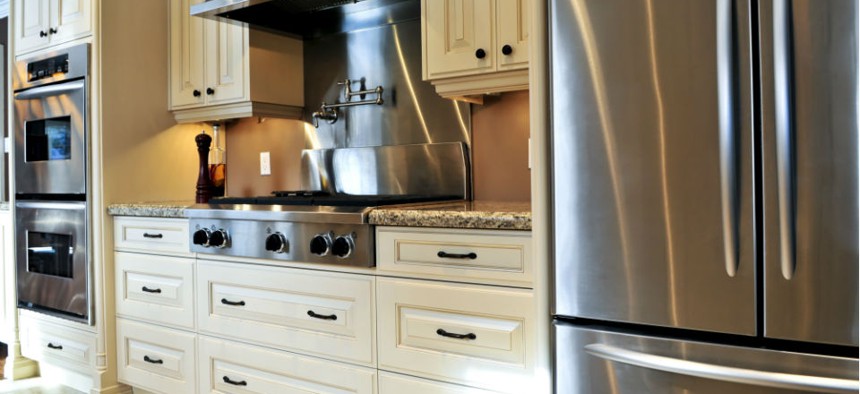Homeland Security Outfits Homes for Ariz. Employees With Fancy Countertops, Walk-in Pantries
Customs and border agency paid a premium for land and unnecessary amenities, watchdog says.
The Customs and Border Protection agency did not properly manage a project to build new housing for employees in Arizona, spending far more money than it needed to on land and high-end home amenities, according to a new watchdog report.
CBP ignored recommendations from a housing study and instead paid $975,000 – nearly triple the amount it needed to – for 12 acres of land to build 21 two- and three-bedroom homes for employees in Ajo, Arizona. In addition to building family-style homes for a workforce that is overwhelmingly single, the agency also purchased 20 mobile homes for $2.4 million. CBP spent a total of about $17 million on the housing project, designed to combat the private-market housing shortage in remote locations along the southwestern U.S. border.
“We identified about $4.6 million spent on the project that could have been put to better use,” the Homeland Security inspector general concluded.
The agency spent a premium on the land, which was a mobile home park, because it had to buy out the current occupants and pay relocation expenses, in addition to simply paying more than the land was worth. “A real estate appraisal determined the land’s value was $335,650. The seller proposed a price of $518,000,” the IG report said. “To expedite the process and avoid a lengthy federal land seizure, a memorandum to the former executive director recommended approval of a counter offer of $400,000.” The agency said other, cheaper properties available in Ajo “were undesirable, undeveloped, or not large enough to accommodate the number of houses it planned to build,” according to the report.
CBP also spent about $680,000 per house and $118,000 per mobile home in Ajo, “which was significantly more than the Ajo average home price of $86,000,” the report stated. The housing study estimated it would cost about $585,000 per house.
Cushy, “nonessential” amenities for the homes, including quartz countertops, stainless steel appliances and walk-in pantries, also added to the cost overruns, the IG found. “According to a CBP official, higher quality items were used because CBP believed if ‘they spent more up front, they would save money in the end,’ ” the report said.
CBP conducted a 2009 study to determine the number and kind of houses it needed to build for employees stationed in Ajo. Lack of available private housing in remote areas is a big challenge for CBP, which operates 329 ports of entry along nearly 7,000 miles of U.S. border. The agency proposed a plan four years ago for developing housing for employees in six locations in Arizona and Texas, including Ajo.
More than half of the 12 acres the government bought for homes in Ajo remain vacant because of limited funding, according to the report. Four of the 21 houses were unoccupied as of March 2014, and the agency now wants to build dorm-style housing in nearly Lukeville, Ariz. “Neither the 21 houses or 20 mobile homes have been fully occupied since the [Ajo] project was completed,” the IG said.
The agency also didn’t provide proper justifications for several cost increases throughout the life of the project, circumventing various contracting and procurement controls, according to the report.
CBP agreed with all five of the IG’s recommendations, which largely called for stronger financial controls and better oversight of such housing projects. The agency agreed to identify and recover from the General Services Administration any unspent funds from the Ajo and Lukeville housing projects, including approximately $3 million.
(Image via Elena Elisseeva/Shutterstock.com)




